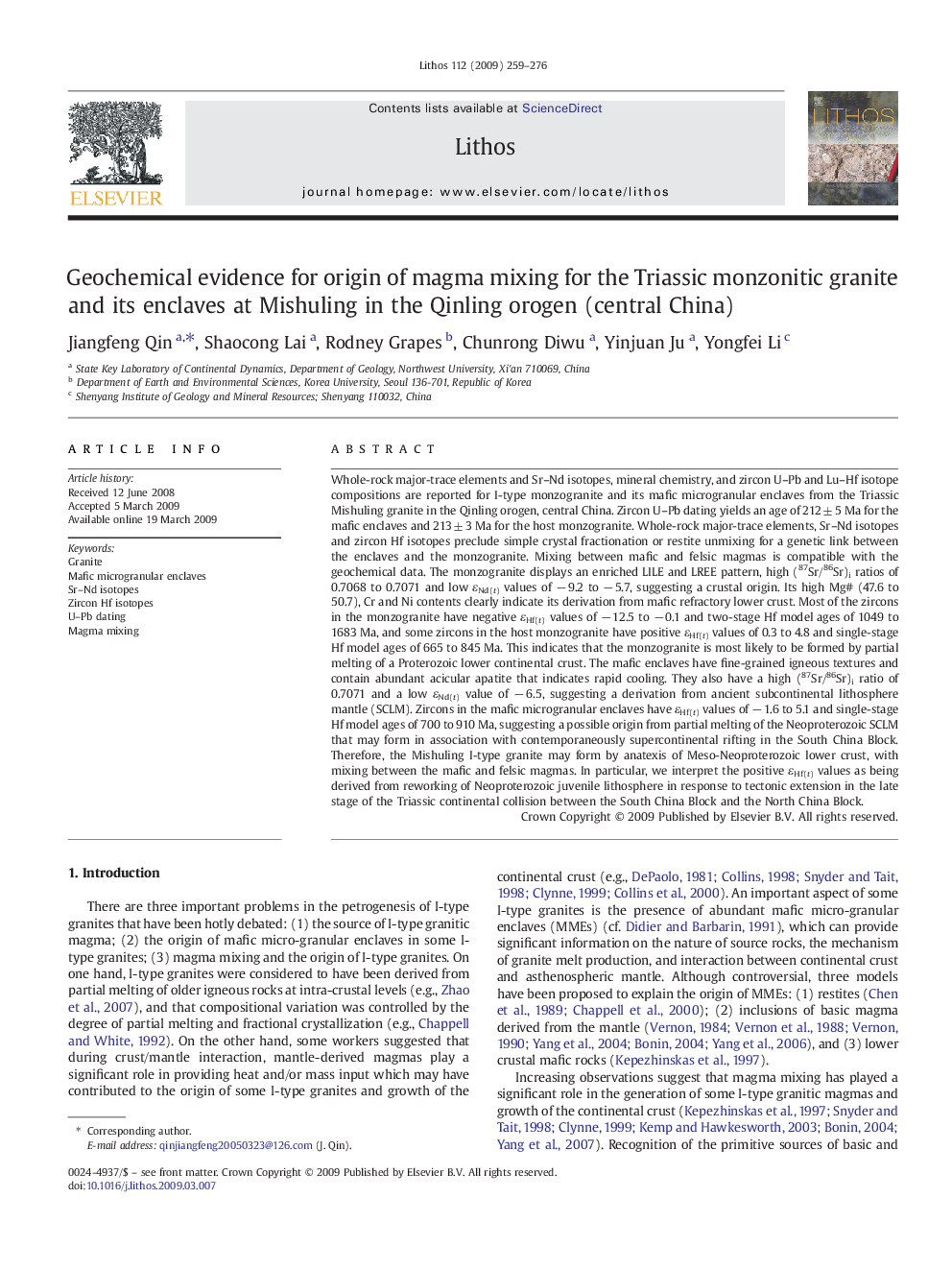| Article ID | Journal | Published Year | Pages | File Type |
|---|---|---|---|---|
| 4717074 | Lithos | 2009 | 18 Pages |
Whole-rock major-trace elements and Sr–Nd isotopes, mineral chemistry, and zircon U–Pb and Lu–Hf isotope compositions are reported for I-type monzogranite and its mafic microgranular enclaves from the Triassic Mishuling granite in the Qinling orogen, central China. Zircon U–Pb dating yields an age of 212 ± 5 Ma for the mafic enclaves and 213 ± 3 Ma for the host monzogranite. Whole-rock major-trace elements, Sr–Nd isotopes and zircon Hf isotopes preclude simple crystal fractionation or restite unmixing for a genetic link between the enclaves and the monzogranite. Mixing between mafic and felsic magmas is compatible with the geochemical data. The monzogranite displays an enriched LILE and LREE pattern, high (87Sr/86Sr)i ratios of 0.7068 to 0.7071 and low εNd(t) values of − 9.2 to − 5.7, suggesting a crustal origin. Its high Mg# (47.6 to 50.7), Cr and Ni contents clearly indicate its derivation from mafic refractory lower crust. Most of the zircons in the monzogranite have negative εHf(t) values of − 12.5 to − 0.1 and two-stage Hf model ages of 1049 to 1683 Ma, and some zircons in the host monzogranite have positive εHf(t) values of 0.3 to 4.8 and single-stage Hf model ages of 665 to 845 Ma. This indicates that the monzogranite is most likely to be formed by partial melting of a Proterozoic lower continental crust. The mafic enclaves have fine-grained igneous textures and contain abundant acicular apatite that indicates rapid cooling. They also have a high (87Sr/86Sr)i ratio of 0.7071 and a low εNd(t) value of − 6.5, suggesting a derivation from ancient subcontinental lithosphere mantle (SCLM). Zircons in the mafic microgranular enclaves have εHf(t) values of − 1.6 to 5.1 and single-stage Hf model ages of 700 to 910 Ma, suggesting a possible origin from partial melting of the Neoproterozoic SCLM that may form in association with contemporaneously supercontinental rifting in the South China Block. Therefore, the Mishuling I-type granite may form by anatexis of Meso-Neoproterozoic lower crust, with mixing between the mafic and felsic magmas. In particular, we interpret the positive εHf(t) values as being derived from reworking of Neoproterozoic juvenile lithosphere in response to tectonic extension in the late stage of the Triassic continental collision between the South China Block and the North China Block.
